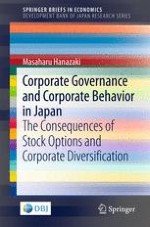2016 | OriginalPaper | Buchkapitel
2. Institutional Characteristics and Effects of a Stock Option
verfasst von : Masaharu Hanazaki
Erschienen in: Corporate Governance and Corporate Behavior in Japan
Verlag: Springer Japan
Aktivieren Sie unsere intelligente Suche, um passende Fachinhalte oder Patente zu finden.
Wählen Sie Textabschnitte aus um mit Künstlicher Intelligenz passenden Patente zu finden. powered by
Markieren Sie Textabschnitte, um KI-gestützt weitere passende Inhalte zu finden. powered by
